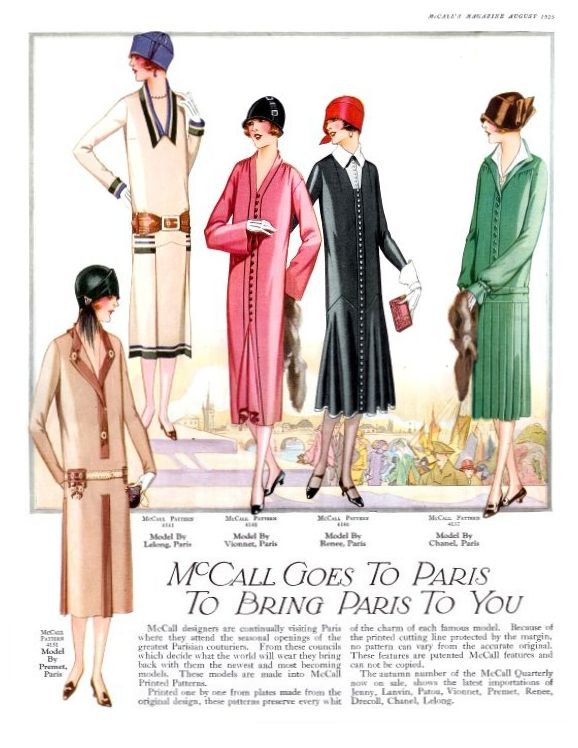(Source: deepglamour.net) Cocktail dresses from the 20's - they seem very weighty and the focus seems to be down - I love the hundreds of sequins and beads running down the far dress - it gives couture-esque detailing to a simple shape.
(Source: metmuseum.org) Evening Dress, 1927, Coco Chanel

(Source: pinterest) A sheer evening dress with Art Deco panels of cascading beads - I think it's beautiful how the beads weigh down an otherwise floaty fabric, giving it a whole new look
Everything was hung /draped off the body - loose fit, tassels hanging down to the floor, shawls and scarves dramatically thrown over shoulders to give a relaxed but also extremely elegant look. This was all highly influenced by Chanel, whose jersey dresses hung with a straight rectangular shapes from the hips to give a very streamlined, chic and simple look. This style is deeply associated with the Roaring Twenties and the Jazz Age, given the new feel of the garments and the smoothness which I feel ties in with the smooth music of the time.
(Source: Pinterest) Daywear in the 20's - The way the drop waists are cinched in is really genius because it hints at curves whilst still allowing women to retain the androgynous silhouette

(Source: ivy-thisiswhatwedo.com) Illustration of all the outfits a typical girl in the 20's may wear - notice how the only seriously curved silhouette is the grieving.
After the war, though couture was still at the height of its time, mass market production had become popular and the clothes were cheap; still giving the same look as something you might find in on the rails of a Parisian atelier, but with a lower quality. These were mass produced and so everyone had the opportunity to wear the trends, blurring the social hierarchy of fashion.

(Source: blogspot) Magazine advertisement for clothes - the Parisian elegance and influence of those like Chanel was showing through, but yet this is accessible for everyone.

(Source: fashion-era.com) Article for McCall's - it describes how their designers were visiting Paris to inspire their mass-market designs, and since they were a popular retailer, everyone would be wearing almost the same look.


No comments:
Post a Comment